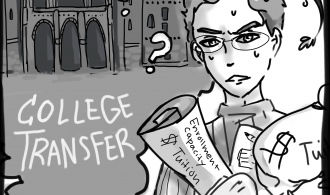Community Colleges Fail to Bridge Students
JESSE ROSALES
Staff Writer
California’s community colleges welcome students this fall term with improved transfer pathways to California State Universities (CSU) and the Universities of California (UC). Bachelor degrees are being offered at 10 colleges as part of the new Associate Degree for Transfer Program (AA-T/AS-T) that focuses on meeting the needs of the state’s changing economy.
The number of community college students transferring has increased at both the UC and CSU. Transferring to a UC or CSU through an Associates Degree is significantly easier than years prior because of programs like the (AA-T/AS-T).
Yet, overcrowded community college campuses make enrolling in required courses difficult; rising tuitions at public universities means four-year degrees are now unaffordable for some students; and a lack of standardization in transfer requirements makes the transfer process confusing.
Programs such as College Promise began in the early 2000s to address the problem of college affordability by offering funding for students who live in selected communities. However, students are still failed by the current system of transfer between community colleges and universities.
Community colleges are failing to bridge students to public universities because they are sufficiently prepared for a surge in enrollment. Consequently, students find that required courses in order to transfer are already filled to enrollment capacity. College Board reports a 22 percent increase in enrollment, relative to 2014. Plans for transferring to a four-year university are set back by months or even years when a course is full, costing the student thousands.
The increased cost of attending a public four-year university is a factor affecting the low number of community college students who successfully transfer to universities. The rising tuition make attending a University of California or California State University campus expensive, particularly for community college students who come from economically or educationally disadvantaged backgrounds.
The American Association of Community Colleges reports that over 48 percent of students enrolled are minorities, making it critical to link to higher education at a low cost.The cost of community colleges has risen by 4 percent for the past twenty years according to Academic Partnership.
Community colleges work independently, failing students because there is no set of courses guaranteed to be accepted at any of California’s public universities. The process is ambiguous, courses may teach the same curriculum, yet hold different names or course codes. A community college student who has fulfilled the requirements for transfer to one state university may not have fulfilled the transfer requirements to another. The confusing process is a loss of money and time of a community college student.
The Institute for Higher Education Leadership and Policy, the leading organization attempting to unify Community Colleges, offers several recommendations for California’s in an attempt to uniform the transfer system. California’s community colleges must develop transfer-ready associate’s degrees that could be completed at any community college campus. This would guarantee the admission to a four-year public university. California state legislation is within the power to direct the process of transferring to a UC or CSU from a community college.
